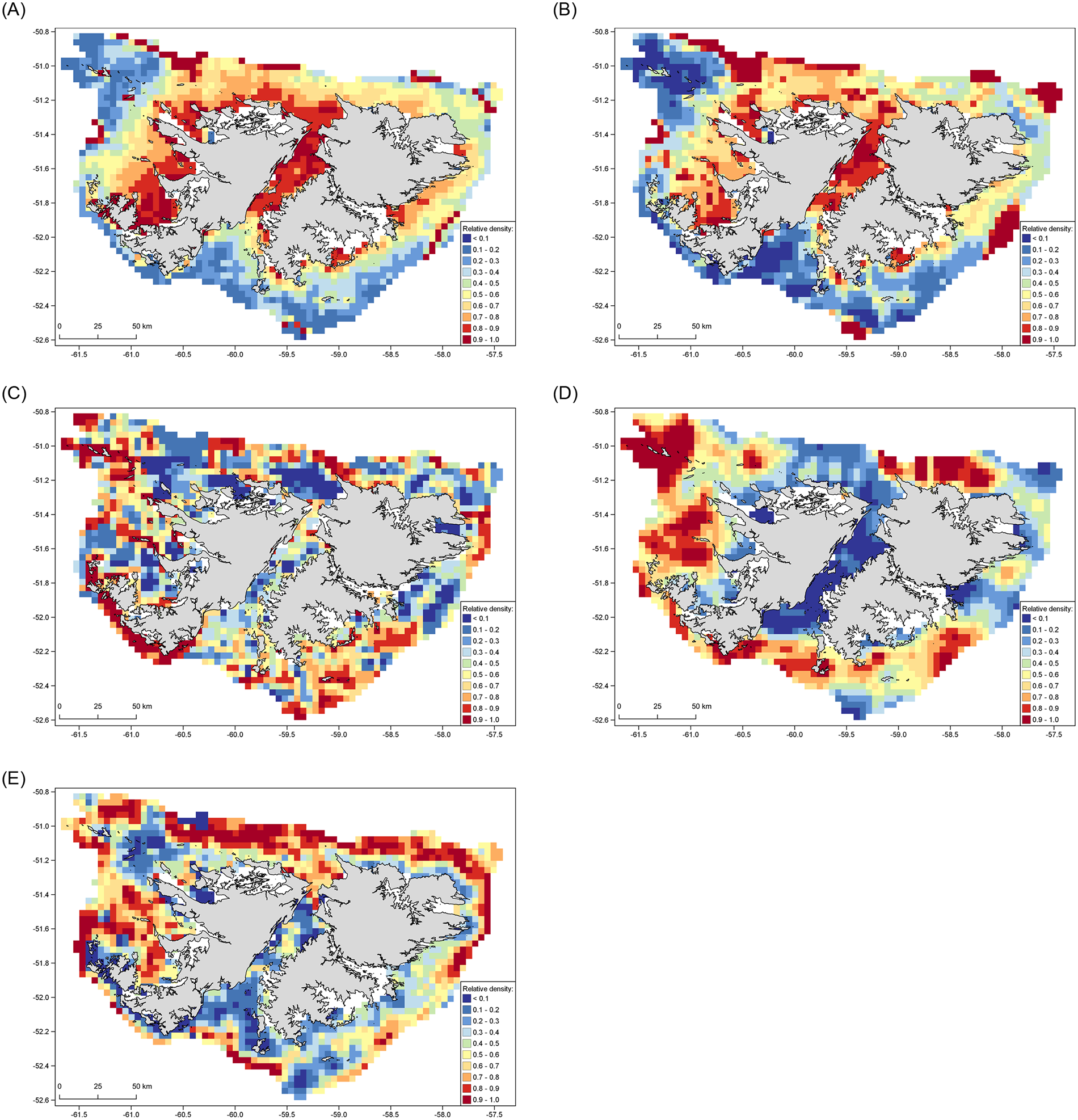We have just published a paper describing habitat modelling of four cetacean species in the coastal waters around the Falkland Islands:
Baines, M. and Weir, C.R. (2020). Predicting suitable coastal habitat for sei whales, southern right whales and dolphins around the Falkland Islands. PLOS ONE 15(12): e0244068. https://doi.org/10.1371/journal.pone.0244068
The full paper is available Open Access at the PLOS ONE website or as a PDF by email request.
ABSTRACT
Species distribution models (SDMs) are valuable tools for describing the occurrence of species and predicting suitable habitats. This study used generalized additive models (GAMs) and MaxEnt models to predict the relative densities of four cetacean species (sei whale Balaenoptera borealis, southern right whale Eubalaena australis, Peale’s dolphin Lagenorhynchus australis, and Commerson’s dolphin Cephalorhynchus commersonii) in neritic waters (≤100 m depth) around the Falkland Islands, using boat survey data collected over three seasons (2017–2019). The model predictor variables (PVs) included remotely sensed environmental variables (sea surface temperature, SST, and chlorophyll-a concentration) and static geographical variables (e.g. water depth, distance to shore, slope). The GAM results explained 35 to 41% of the total deviance for sei whale, combined sei whales and unidentified large baleen whales, and Commerson’s dolphins, but only 17% of the deviance for Peale’s dolphins. The MaxEnt models for all species had low to moderate discriminatory power. The relative density of sei whales increased with SST in both models, and their predicted distribution was widespread across the inner shelf which is consistent with the use of Falklands’ waters as a coastal summer feeding ground. Peale’s dolphins and Commerson’s dolphins were largely sympatric across the study area. However, the relative densities of Commerson’s dolphins were generally predicted to be higher in nearshore, semi-enclosed, waters compared with Peale’s dolphins, suggesting some habitat partitioning. The models for southern right whales performed poorly and the results were not considered meaningful, perhaps due to this species exhibiting fewer strong habitat preferences around the Falklands. The modelling results are applicable to marine spatial planning to identify where the occurrence of cetacean species and anthropogenic activities may most overlap. Additionally, the results can inform the process of delineating a potential Key Biodiversity Area for sei whales in the Falkland Islands.







